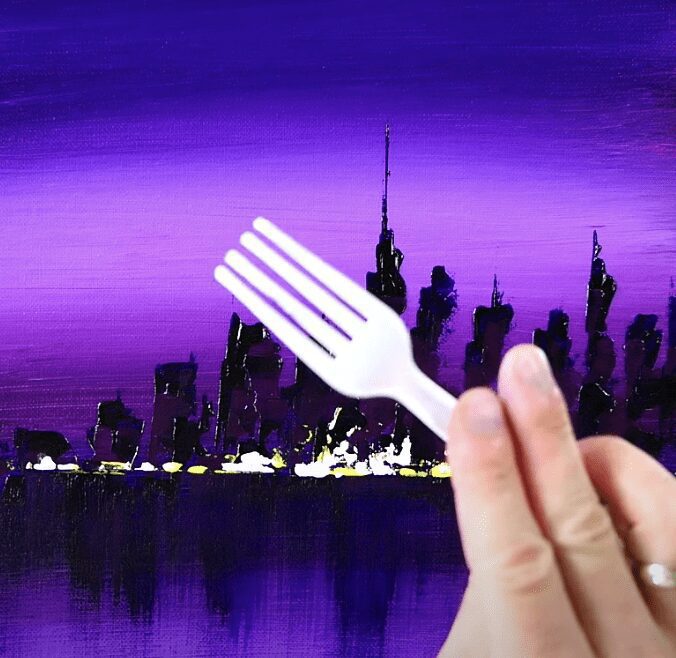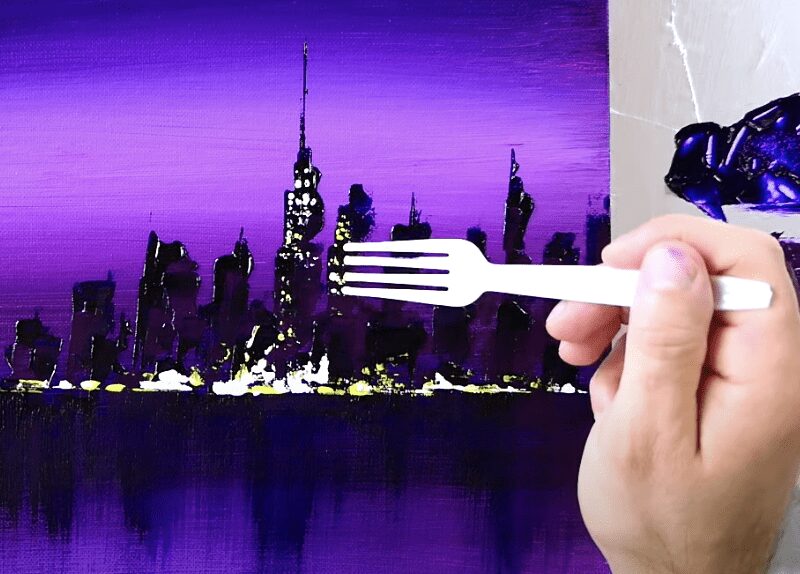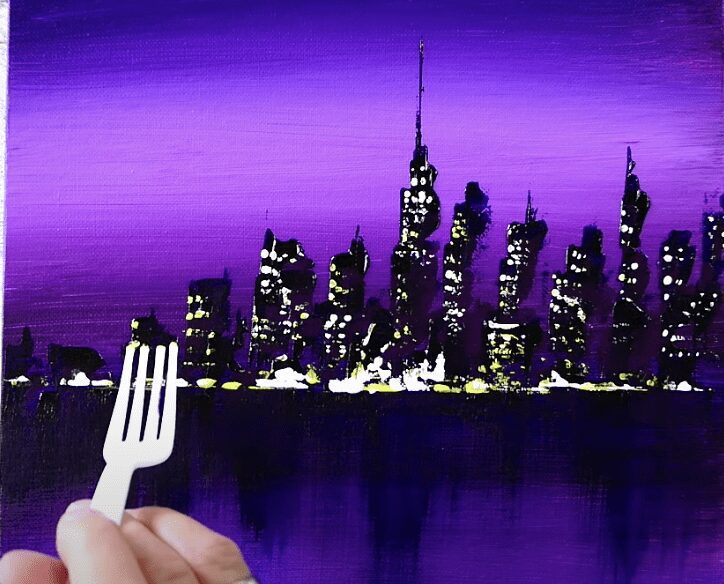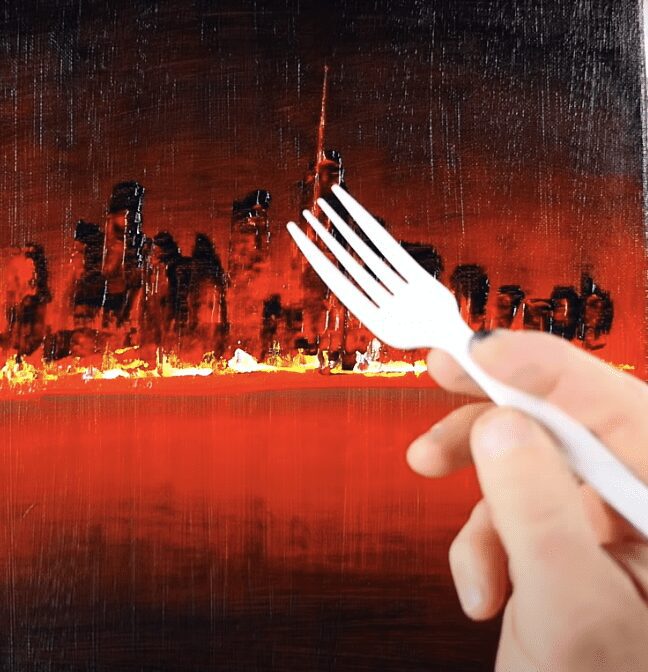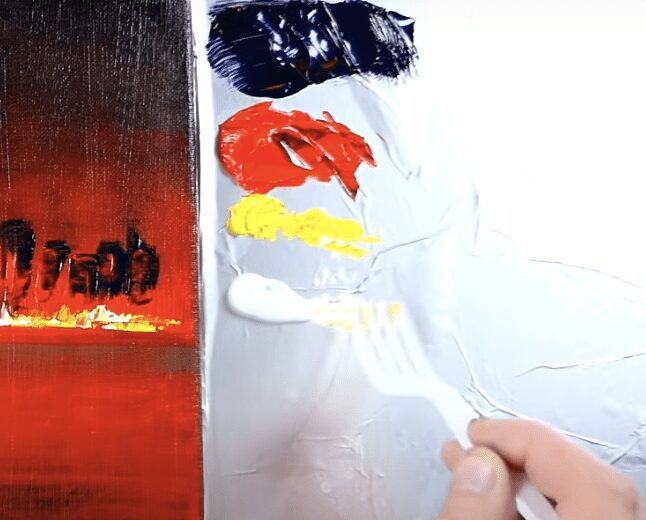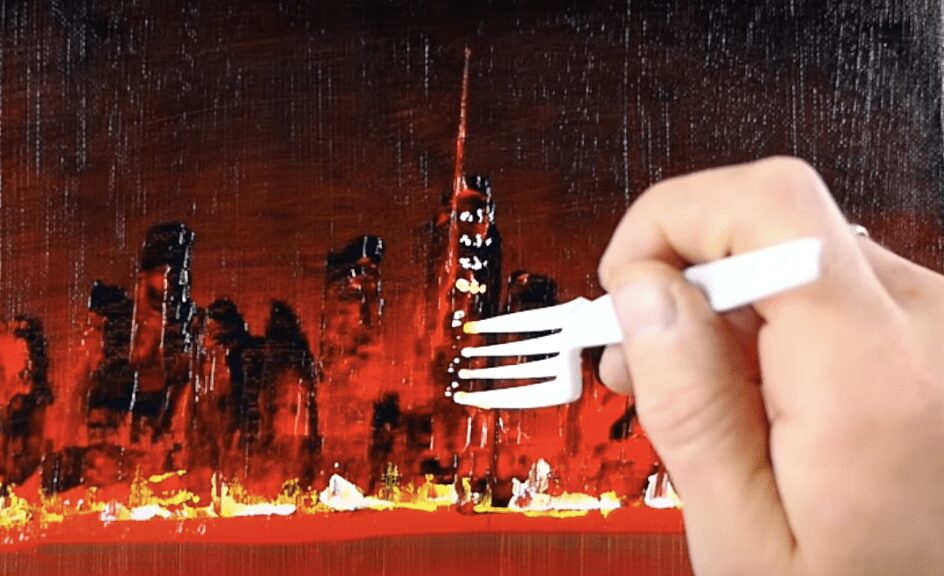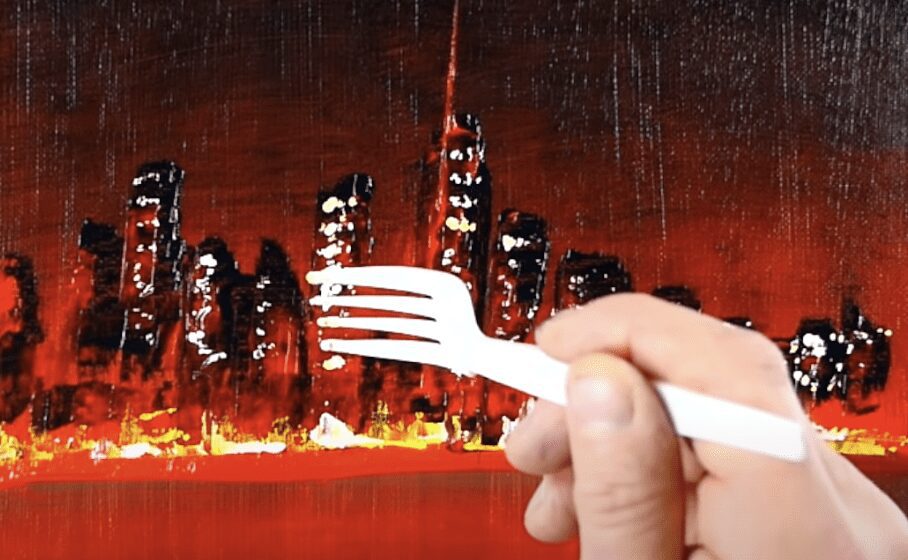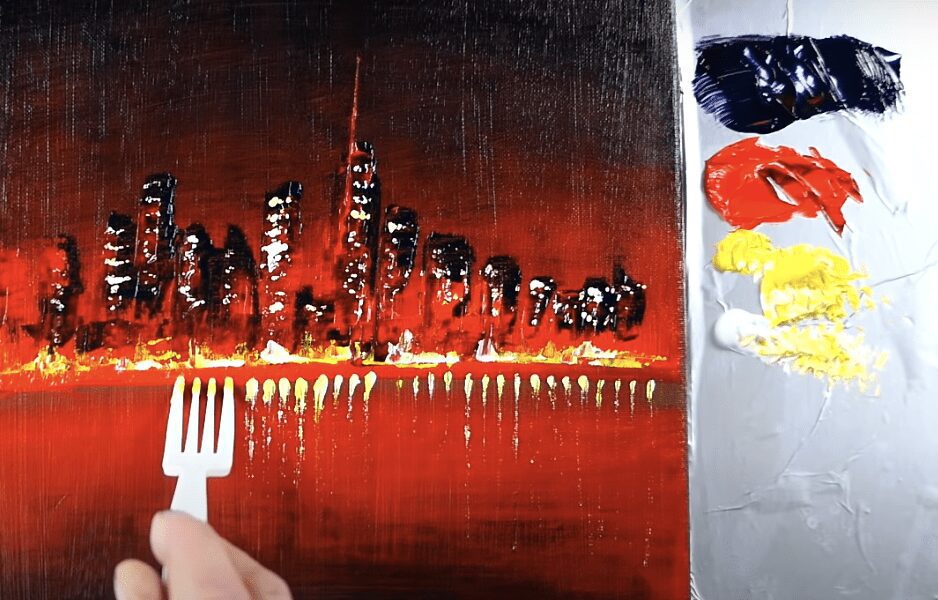It’s always fun to experiment painting with the use of objects found in your home. Plastic for is no exception to this.
- In the realm of acrylic painting, artists are constantly pushing boundaries and exploring new techniques to achieve captivating and diverse results. One of the lesser-known but intriguing methods involves experimenting with a seemingly mundane object: the disposable plastic fork.
- By utilizing the unique texture and flexible tines of the fork, artists can create captivating patterns and textured effects on their canvas, enhancing the visual dimension of their artwork.
- This unconventional approach allows for a fascinating blend of precision and spontaneity, merging the controlled application of paint with the organic and unpredictable patterns generated by the fork.
- The disposable plastic fork thus becomes not only a functional tool but also a source of artistic inspiration, enabling artists to explore the boundaries of creativity and produce visually striking acrylic paintings.
To use this tool in our abstract cityscape painting we will do the following:
- First step is to have your buildings already painted in your cityscape. For more details on how to paint the buildings using pallet knife please refer to my videos down below.
- We are going to paint light in the windows, streetlights as well as light being reflected in the water using our plastic fork.
- Load your plastic fork by lightly tapping on the color of your choice. Preferably, some light color such as white, yellow, or maybe even bright red
- Using your fork in various positions such as horizontal or vertical start tapping away in the silhouettes of our already created buildings.
- Vary your choice of color to add depth and color to your cityscape lights
- After you are done with the buildings, in a similar way, start creating streetlights below the buildings stretching across your entire cityscape.
- Finally, very gently tap few dots in the water down below the buildings and slide the paint downward to add elongated reflections.
